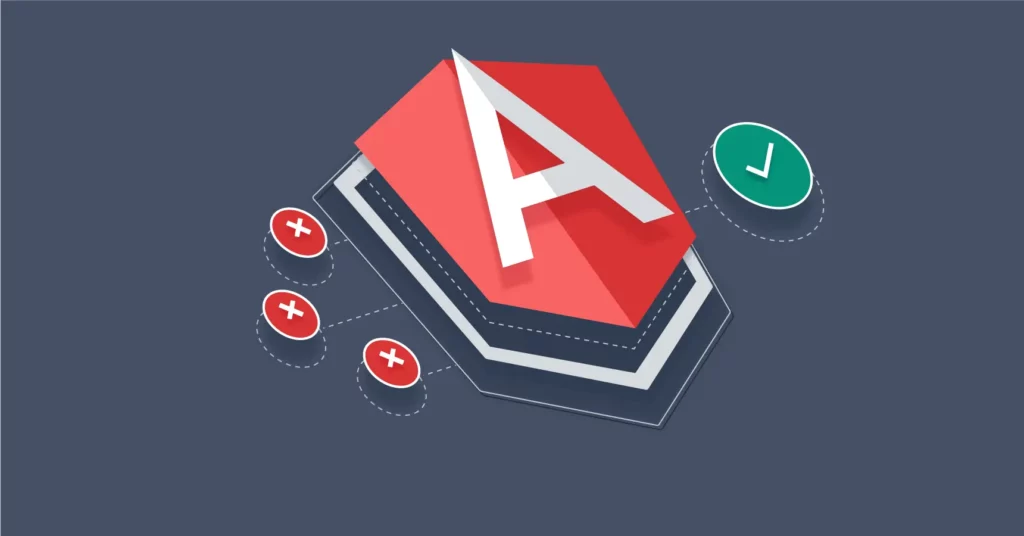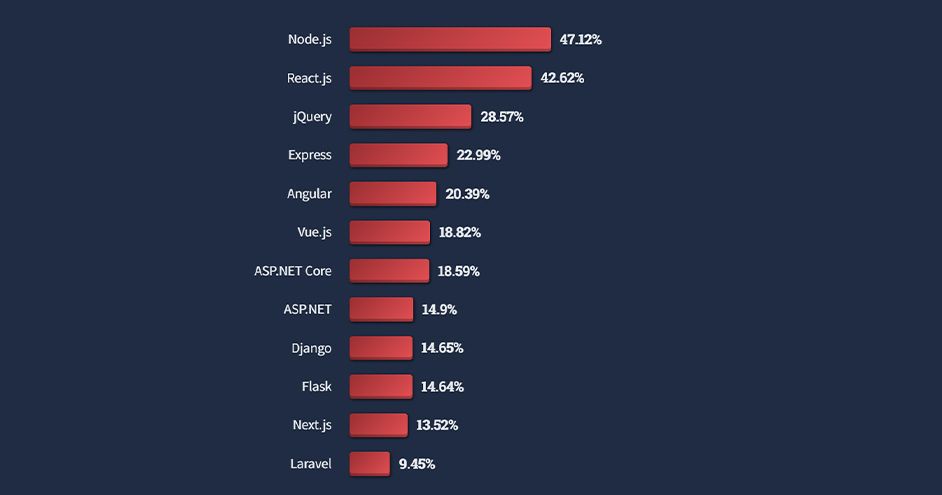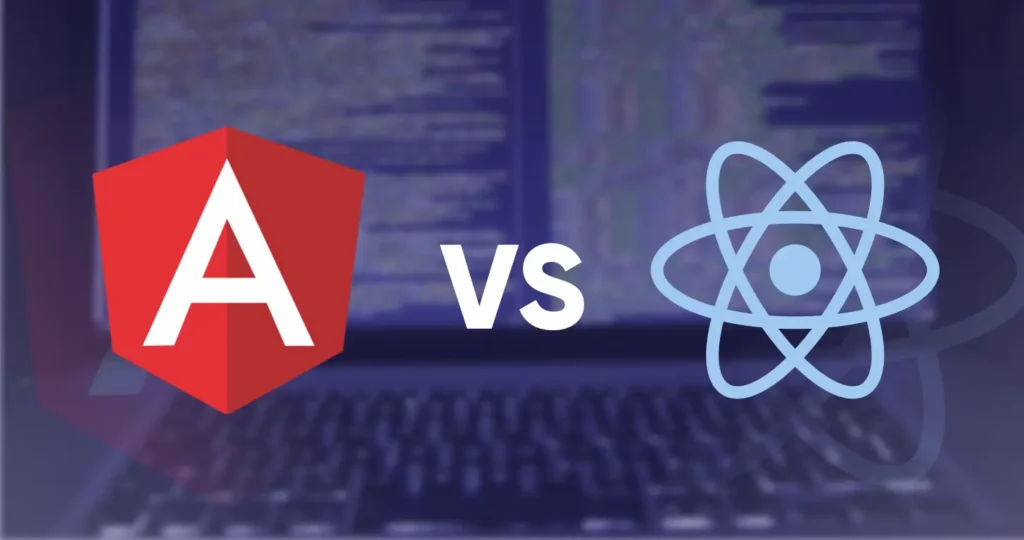Difference Between ReactJS and AngularJS: When choosing a particular framework or library, JavaScript has a plethora of options for front-end development, such as VueJS, TezJS, and Svelte. However, Angular and React secure their places at the top of the list as many developers consider them the best front-end development frameworks due to their popularity.
Which framework is popular – Angular or React? To help you find answers to the above questions, we will have a detailed comparison between these front-end frameworks. The debate on the difference between Angular and React occurs every time front-end programming is required.
In this article, we will analyze which framework is better in which situations. So, which one to choose: Angular or React? Let’s figure it out.
ReactJS

React is a front-end JavaScript library that allows you to build user interfaces from reusable UI components. React uses server-side rendering to provide a flexible and performance-based solution. It allows developers to create seamless UX and complex UI.
Since React follows the “Learn Once, Write Anywhere” principle, it’s the preferred choice for developers to build fast and scalable applications. Along with JavaScript, React can also be used with JSX. Developed by Facebook, React is maintained by Facebook communities and individual developers
Benefits of using React over Angular
- JSX Advantage
- Building Blocks Flexibility
- Isomorphic JavaScript
- Single Data Binding
Features of ReactJS
1. JSX: JSX is a JavaScript syntax extension. The JSX syntax is processed into JavaScript calls of React Framework. It extends the ES6 so that HTML like text can co-exist with JavaScript React code.
2. Components: ReactJS is all about components. ReactJS application is made up of multiple components, and each component has its logic and controls. These components can be reusable, which help you to maintain the code when working on larger scale projects.
3. One-way Data Binding: ReactJS follows unidirectional data flow or one-way data binding. The one-way data binding gives you better control throughout the application. If the data flow is in another direction, then it requires additional features. It is because components are supposed to be immutable, and the data within them cannot be changed.
4. Virtual DOM: A virtual DOM object is a representation of the real DOM object. Whenever any modifications happen in the web application, the entire UI is re-rendered in virtual DOM representation. Then, it checks the difference between the previous DOM representation and new DOM. Once it has done, the real DOM will update only the things that are changed. It makes the application faster, and there is no wastage of memory.
5. Simplicity: ReactJS uses the JSX file, which makes the application simple and to code as well as understand. Also, ReactJS is a component-based approach which makes the code reusable as your need. It makes it simple to use and learn.
6. Performance: ReactJS is known to be a great performer. The reason behind this is that it manages a virtual DOM. The DOM exists entirely in memory. Due to this, when we create a component, we did not write directly to the DOM. Instead, we are writing virtual Components that will turn into the DOM, leading to smoother and faster performance.
AngularJS

AngularJS is a very powerful JavaScript Framework. It is used in Single Page Application (SPA) projects. It extends HTML DOM with additional attributes and makes it more responsive to user actions. AngularJS is open-source, completely free, and used by thousands of developers around the world. It is licensed under the Apache license version 2.0.
Benefits of using Angular over React
- MVC Model
- Dependency Injection
- Out-of-the-box Full Stack Framework
- Two-way Data Binding
- Amazing App Structure
Features of AngularJS
1. Data binding: With data binding by your side, a user can easily manipulate web page elements through a web browser. It utilizes dynamic HTML and waives off intricate scripting or programming. Data binding plays a vital role when coming up with web pages equipped with interactive components, like games, tutorials, etc. Also, when a web page has way too much data, it enables a better display.
2. Cross-platform: It is imperative to have this factor first on the Angular features list because Angular plays a prominent role in developing Progressive Web Applications (PWA). With PWA by your side, audiences can enjoy an app-like experience using contemporary web capabilities. Most importantly, with this feature, you can deploy a local or a progressive app.
3. Sectional structure: The best part about the Angular framework is it helps in organizing code into different modules as and when you build them. Due to this feature, there is a division of overall functionality into reusable code. Furthermore, this helps in the division of tasks among the Angular developers and permits web applications to accomplish lazy loading.
4. Set of Directives: AngularJS expands the functionality of HTML with a set of inbuilt attributes, also known as directives. The imperative functionality of these directives is to boost the competence of HTML. With this, it becomes immensely appropriate for dynamic client-side applications. The best part is these directives can be self-initiated using AngularJS.
5. Typescript: TypeScript is the superscript of JavaScript. The main advantage of using TypeScript is you can detect and correct errors in the code while writing. It also supports AngularJS security features like primitive and interface. Interestingly, Angular is written using TypeScript and boasts all these features.
Popularity Comparision

ReactJS vs AngularJS
| Author | Facebook Community | |
| Developer | Jordan Walke | Misko Hevery |
| Initial Release | March 2013 | October 2010 |
| Latest Version | React 16.8.6 on 27 March 2019 | Angular 1.7.8 on 11 March 2019. |
| Language | JSX | JavaScript, HTML |
| Type | Open Source JS Framework | Open Source MVC Framework |
| Rendering | Server-Side | Client-Side |
| Packaging | Strong | Weak |
| Data-Binding | Uni-directional | Bi-directional |
| DOM | Virtual DOM | Regular DOM |
| Testing | Unit Testing | Unit and Integration Testing |
| App Architecture | Flux | MVC |
| Dependencies | It requires additional tools to manage dependencies. | It manages dependencies automatically. |
| Routing | It doesn’t handle routing but has a lot of modules for routing, eg., react-router. | It requires a template or controller to its router configuration, which has to be managed manually. |
| Performance | Fast, due to virtual DOM. | Slow |
| Best For | It is best for single-page applications that update multiple views at a time. | It is best for single-page applications that update a single view at a time. |
Read more
React create-react app
Top Features of React JS For Better Development
React JS | Advantages and Disadvantages



